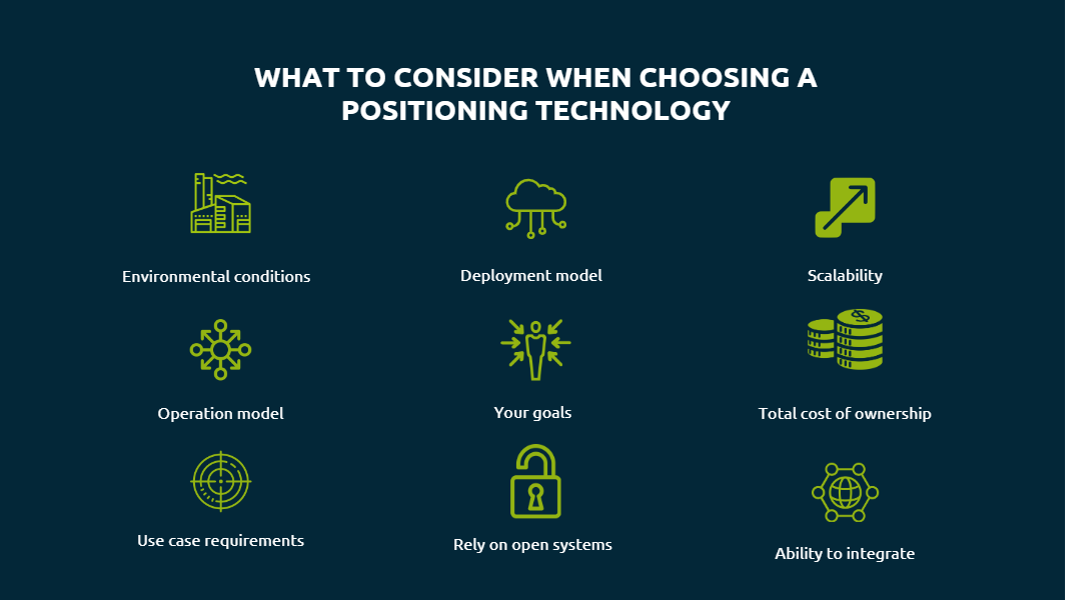08.02.2023
Things to consider when evaluating location technology

There are several questions you should ask yourself when choosing a location technology. As RTLS solution provider it’s our daily business to clarify these points with our customers during the consultation process. Nevertheless, it makes sense to agree on some framework conditions internally already, or at least to let them run through your mind before you start your evaluation process. And most important tip of all: Involve all stakeholders in the process right from the beginning.
The first thing to consider when evaluating different positioning technologies for your use case is obvious: the tracking environment. What your physical tracking area looks like will have a big impact on your choice of technology. For example, to decide on the right infrastructure, it is important to know if the area is open and if there is a line-of-sight between the anchor points and the tags. Or is the environment dusty or even explosive? The more details you can give us as an RTLS solution provider, the more customized your solution will be.
Another thing to consider early in your RTLS project planning is the deployment model. Are you comfortable with a SaaS location solution deployed in the cloud and, of course, fully data secure, or do you want to store your data locally with an on-premises model? The location of the data will not directly affect your choice of technology, but it will affect your choice of provider.
To stick to the “hard facts” as with every project – be it in business or in private – you should know your budget. And with budget we mean the total costs of ownership for a RTLS solution. In the beginning there will be somehow higher costs for the hardware, the roll-out and initial installation, while later on there will be only the licensing costs as well as potentially arising maintenance costs. However, it is important to keep them in mind even though the follow-up costs are lower than the initial ones.
Depending on your individual use case scenario you will have requirements to be met by the positioning technology. Be it in terms of accuracy, latency or that the location solution needs to work indoors as well as outdoors. Based on these requirements you should evaluate different positioning technologies and RTLS providers to see which one is your perfect match. There might of course be cases, where there can’t be identified one single technology and you might think about a hybrid solution. In this case it makes sense to get in touch with RTLS experts that rely on open systems and a technology agnostic approach to adopt in the best way possible to your use case.
All of the above are external factors that are only partially within your control. But what it comes down to in the end are the following 3 questions:
- Where do you see your business in 10 years? Can the positioning technology grow with it and in the same pace?
- How do you want to integrate your RTLS into your daily work? Which departments and employees will be involved?
- What are your goals? What do you want to achieve with real-time positioning? What problems are you trying to solve?
What you should always do before thinking about technologies, hardware, deployment models, or even budget is to be or become aware of your pain points and try to get a clear vision of your expected goals with RTLS. This is the only way an RTLS will deliver the value you need, because it will be tailored to your needs.
